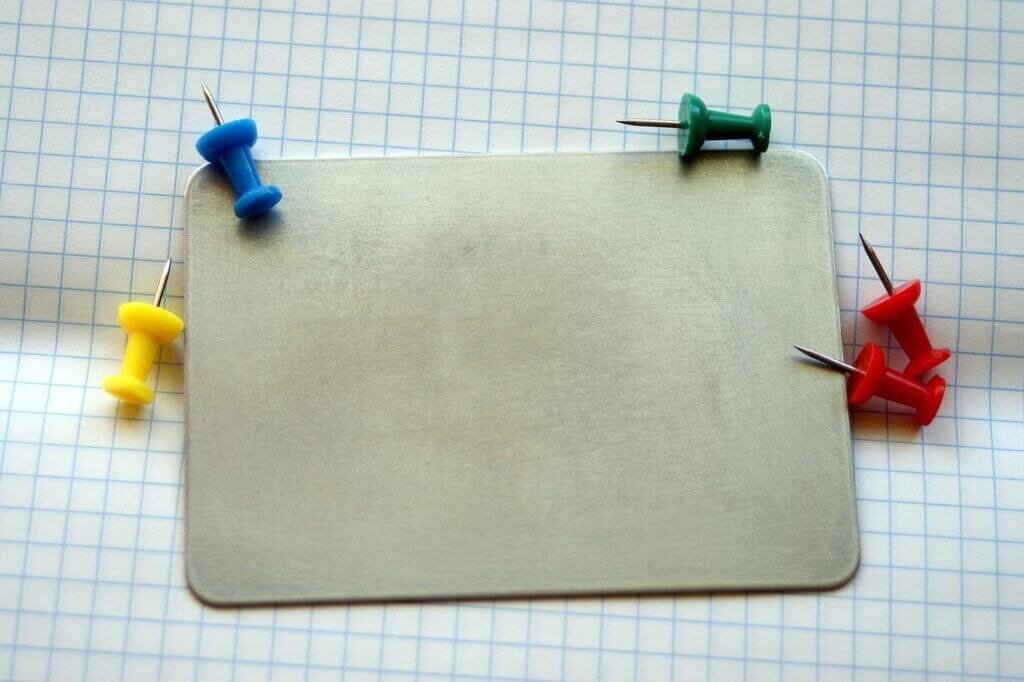So, you’ve decided to bring a new fur-baby into your home, and you can’t wait to see your dog’s reaction. But wait, hold on a second! Introducing your dog to a new cat or any other pet can be a bit of a tricky situation. You want to ensure a smooth transition and a harmonious coexistence, but where do you even start? Well, fear not, because in this article, we’re going to guide you through the process step by step and equip you with all the tips and tricks you need to successfully introduce your dog to a new feline or any other furry friend. It’s time to embark on this exciting journey of pet integration, and we’re here to be your friendly guide throughout the process!

Understanding the Importance of Proper Introductions
Introducing pets properly is crucial for creating harmonious relationships and minimizing potential conflicts. Whether you are introducing a new pet to your household or introducing your pet to another animal in a different setting, taking the time to ensure a smooth and gradual introduction is essential. By following some simple techniques and guidelines, you can facilitate a successful introduction and help your pets build positive relationships with each other.
Why is it important to introduce pets properly?
Proper introductions help prevent conflicts, reduce stress, and promote a healthy environment for both animals involved. Rushing the introduction process can lead to territorial behaviors, aggression, and even physical harm. By introducing your pets properly, you give them the opportunity to become acquainted at their own pace, alleviating anxiety and fear associated with abrupt introductions. It also sets a solid foundation for long-term cohabitation and minimizes the risk of future conflicts.
The potential risks of improper introductions
Improper introductions can have serious consequences for both pets and their owners. When animals are not given the chance to establish trust and familiarity, they may exhibit aggressive behaviors, causing harm to each other or jeopardizing the safety of the household. Additionally, failed introductions can lead to long-lasting negative associations, making future attempts at introduction even more challenging. It is essential to prioritize the well-being of all animals involved and avoid shortcuts that may compromise their safety.
Preparing for the Introduction
Before bringing your pets together, it is important to create a safe and neutral environment that minimizes potential conflicts and allows for a gradual introduction process. This involves considering the needs and characteristics of each pet and ensuring their well-being during the introduction period.
Creating a safe and neutral environment
Choose a room or space that is unfamiliar to both pets for their initial introduction. This helps to minimize territorial behaviors and allows both animals to explore and adjust to their new surroundings without feeling threatened. Remove any valuable or personal items from the area to prevent resource guarding and ensure a stress-free environment.
Understanding the pets’ needs and characteristics
Take the time to understand your pets’ individual needs and characteristics before the introduction. Consider factors such as age, breed, and personality traits, as these can influence how they respond to new situations and other animals. Some pets may have a higher prey drive, while others may be more timid or fearful. This knowledge will help you tailor the introduction process to suit their specific needs and ensure a smoother transition.
Gradual Introduction Techniques
Once you have prepared the environment and familiarized yourself with your pets’ needs, it is time to begin the gradual introduction process. This can be done through scent swapping, visual barriers, and supervised meetings, depending on the specific type of pets you are introducing.
Using scent swapping
Scent swapping is an effective way of introducing pets indirectly before initiating face-to-face meetings. Start by swapping bedding or blankets between the pets, allowing them to become familiar with each other’s scent. By associating the scent with positive experiences, such as treats or playtime, you can create a positive association and reduce anxiety.
Using visual barriers
Visual barriers are particularly useful when introducing pets that may exhibit territorial behaviors or aggression. Use baby gates or pet barriers to allow the pets to see and smell each other without direct contact. This gradual exposure helps them become familiar with each other’s presence while minimizing the risk of physical harm.
Supervised meetings
Once the pets show positive responses to scent swapping and visual barriers, you can begin supervised meetings in a controlled environment. Use leashes or harnesses for dogs and carriers or crates for cats to ensure safety and manage their interactions. Keep the meetings short and gradually increase the time spent together as their comfort levels improve.
Introducing a Dog to a Cat
Introducing a dog to a cat requires careful consideration of the dog’s behavior and temperament, as well as proper preparation for the introduction. By following a few key steps, you can increase the chances of a successful introduction and ensure a positive relationship between them.
Understanding the dog’s behavior and temperament
Before introducing a dog to a cat, it is crucial to understand the dog’s behavior and temperament. Some dogs may have a high prey drive, while others may be more laid-back or friendly towards other animals. By knowing your dog’s tendencies, you can take appropriate precautions and tailor the introduction process accordingly.

Preparing the dog for the introduction
Ensure your dog is well-exercised and mentally stimulated before the introduction. A tired dog is typically calmer and less likely to become overly excited or reactive. Consider incorporating obedience training and leash manners, as these skills will be valuable during the introduction process.
Introducing the dog and cat in a controlled environment
Choose a neutral space for the initial introduction, such as a quiet room or a fenced backyard. Keep both animals securely leashed or confined, allowing them to observe each other from a safe distance. Monitor their behavior closely and look for signs of curiosity, calmness, and non-threatening body language.
Monitoring the interactions
Once the initial introduction goes well and both animals appear calm, you can gradually increase their time spent together. Always observe their interactions closely and step in if necessary. If any signs of aggression or fear arise, separate the pets and consider seeking professional help to address and manage the issue.
Introducing a Dog to Other Dogs
Introducing a dog to other dogs can be an exciting and rewarding experience, but it requires careful planning and consideration. By following some essential steps, you can ensure a smooth and successful introduction between dogs.
Choosing the right dogs for introduction
When introducing a dog to other dogs, it is important to choose compatible companions. Consider factors such as size, energy levels, and temperament. Similarities in these areas increase the likelihood of a positive interaction and can prevent potential conflicts.
Neutral territory meeting
To promote a neutral and non-threatening environment, introduce the dogs on neutral territory, such as a park or an unfamiliar outdoor space. This eliminates territorial behaviors and allows the dogs to focus on each other without feeling protective of their personal spaces.
Proper leash and body language handling
Use sturdy leashes and ensure you can maintain control over your dog’s movements during the introduction. Watch for any signs of tension or aggression and be prepared to redirect their attention or take a step back if needed. It is essential to stay calm and composed, as dogs can pick up on your energy and react accordingly.
Gradually increasing interaction time
Once the dogs show positive body language and playfulness, you can gradually increase their interaction time. Allow them to engage in supervised play, always being ready to intervene if their play becomes overly rough or aggressive. Regularly assess their compatibility and ensure that they continue to enjoy each other’s company.
Introducing a Dog to a Small Pet (e.g., Rabbit, Guinea Pig)
Introducing a dog to a small pet, such as a rabbit or guinea pig, requires special care and supervision to ensure the safety of both animals. By following these steps, you can facilitate a positive and respectful relationship between your dog and the small pet.
Creating a secure and separate area for the small pet
Before introducing the dog to the small pet, create a secure and separate area for the small pet to retreat to if necessary. Use appropriate enclosures or cages that are large enough to allow the small pet to move comfortably but small enough to keep the dog from accessing it.
Training the dog to be calm and gentle around small animals
Teach your dog basic obedience commands such as “sit,” “stay,” and “leave it” to have better control in the presence of small pets. Gradually expose your dog to the sight, scent, and sound of the small pet and reward calm and gentle behavior. Consistent training will help your dog understand the expected behavior around small animals.
Supervised interactions with the small pet
Once your dog is comfortable and responds positively to the presence of the small pet, you can begin supervised interactions. Keep the dog on a leash or in a controlled setting and allow the small pet to move freely. Gradually increase the proximity and duration of the interactions while closely monitoring their behavior.

Implementing positive reinforcement
Reward your dog for calm and appropriate behavior during interactions with the small pet. Praise, treats, and toys can be used as positive reinforcements. This positive association helps your dog understand that gentle and respectful behavior is rewarded and encourages them to continue exhibiting that behavior.
Introducing a Cat to Other Cats
Introducing a new cat to existing cats in your household can be a delicate process. Cats can be territorial, and sudden introductions can lead to aggressive behaviors. By following these steps, you can facilitate a smoother integration and increase the chances of a successful coexistence.
Separate space for the new cat
Before introducing the new cat to the existing cats, ensure that the new cat has a separate space to establish its scent and feel safe. This allows the cats to be aware of each other’s presence and gradually become accustomed to the new cat’s scent without direct confrontations.
Gradual scent exchange
Exchange the scents of the cats by rubbing a soft cloth on one cat’s face and then allowing the other cats to sniff it. Repeat this process with each cat, ensuring that the scent exchange is mutual. This gradual scent exposure helps the cats become familiar with each other’s scent, reducing potential territorial behaviors.
Supervised meetings in a controlled environment
Once the cats are comfortable with each other’s scents, you can begin supervised meetings in a controlled environment. Use baby gates or pet barriers to create separate areas initially, allowing the cats to see and sniff each other without physical contact. Gradually increase their proximity and observe their body language for signs of aggression or tension.
Understanding and managing territorial behaviors
It is important to understand and manage territorial behaviors that may arise during the introduction process. Provide multiple resources such as litter boxes, feeding stations, and resting areas to prevent competition. Additionally, monitor the cats’ behavior closely and be ready to intervene if any aggressive behaviors occur. Patience and consistency are key in addressing and resolving any territorial concerns.
Introducing a Cat to a Small Pet (e.g., Hamster, Bird)
Introducing a cat to a small pet, such as a hamster or bird, requires cautious supervision to ensure the safety of the small pet. By following these steps, you can minimize potential risks and create a positive environment for both your cat and the small pet.
Secure and separate area for the small pet
Before introducing the cat to the small pet, create a secure and separate area for the small pet. Use appropriate enclosures or cages to keep the small pet safe and prevent the cat from accessing it. Ensure that the small pet has ample space to move comfortably and that the enclosure is escape-proof.
Introducing scents and sounds of the small pet
Allow the cat to become familiar with the scent and sounds of the small pet before any direct interaction. Place the cat’s bed or blanket near the small pet’s enclosure and play recordings of the small pet’s sounds. This gradual exposure helps the cat adjust to the presence of the small pet in a non-threatening way.
Gradually introducing visual and supervised interactions
Once the cat shows curiosity and calmness towards the small pet’s scent and sounds, you can begin supervised visual interactions. Use a barrier or transparent enclosure that allows the cat to observe the small pet without physical contact. Gradually increase their exposure time while closely monitoring their behavior.
Providing vertical spaces for the cat
Cats naturally enjoy vertical spaces, so provide tall cat trees, shelves, or perches in the room where the small pet is housed. This allows the cat to observe the small pet from a safe distance and retreat to a higher level if needed. Vertical spaces also promote a sense of security and ownership for the cat.
Dealing with Challenges and Problems
Despite careful planning and preparation, challenges may arise during the introduction process. It is important to be aware of potential problems and have strategies in place to address them effectively.
Aggression and fights between pets
If aggression or fights occur between the pets, separate them immediately to prevent physical harm. Give them time to calm down and evaluate the situation. Assess any triggers or underlying causes for the aggression and consider seeking professional help for behavior modification techniques if necessary.
Separation and gradual reintroduction
In cases where the initial introduction did not go as planned or conflicts arise in an already established relationship, it may be necessary to separate the animals temporarily. This creates a reset period and allows for gradual reintroduction using the same techniques mentioned earlier. Take the time to address any existing issues and reintroduce the pets at a pace that ensures their safety and well-being.
Seeking professional help
If you encounter persistent conflicts or behavior issues that you are unable to address on your own, do not hesitate to seek professional help. A qualified trainer or animal behaviorist can provide valuable guidance and expertise to help resolve any complex problems and ensure the safety and happiness of all pets involved.
The Importance of Patience and Consistency
Throughout the introduction process, it is crucial to exhibit patience and consistency. Each pet will have its own timeline for adjustment, and rushing the process can lead to setbacks and potential conflicts. Allow the pets to set their own pace and gradually increase their interactions, ensuring that each interaction is positive and reinforcing. Repeat successful introductions and reinforce good behavior with praise, treats, and affection.
By understanding the importance of proper introductions, preparing for the introduction, and following gradual introduction techniques, you can create a harmonious environment for your pets. Whether it is introducing a dog to a cat, introducing a dog to other dogs, introducing a dog to a small pet, introducing a cat to other cats, or introducing a cat to a small pet, each process requires careful consideration, supervision, and patience. With dedication and a focus on positive reinforcement, you can help your pets build strong and lasting relationships, ensuring a happy and peaceful coexistence.


